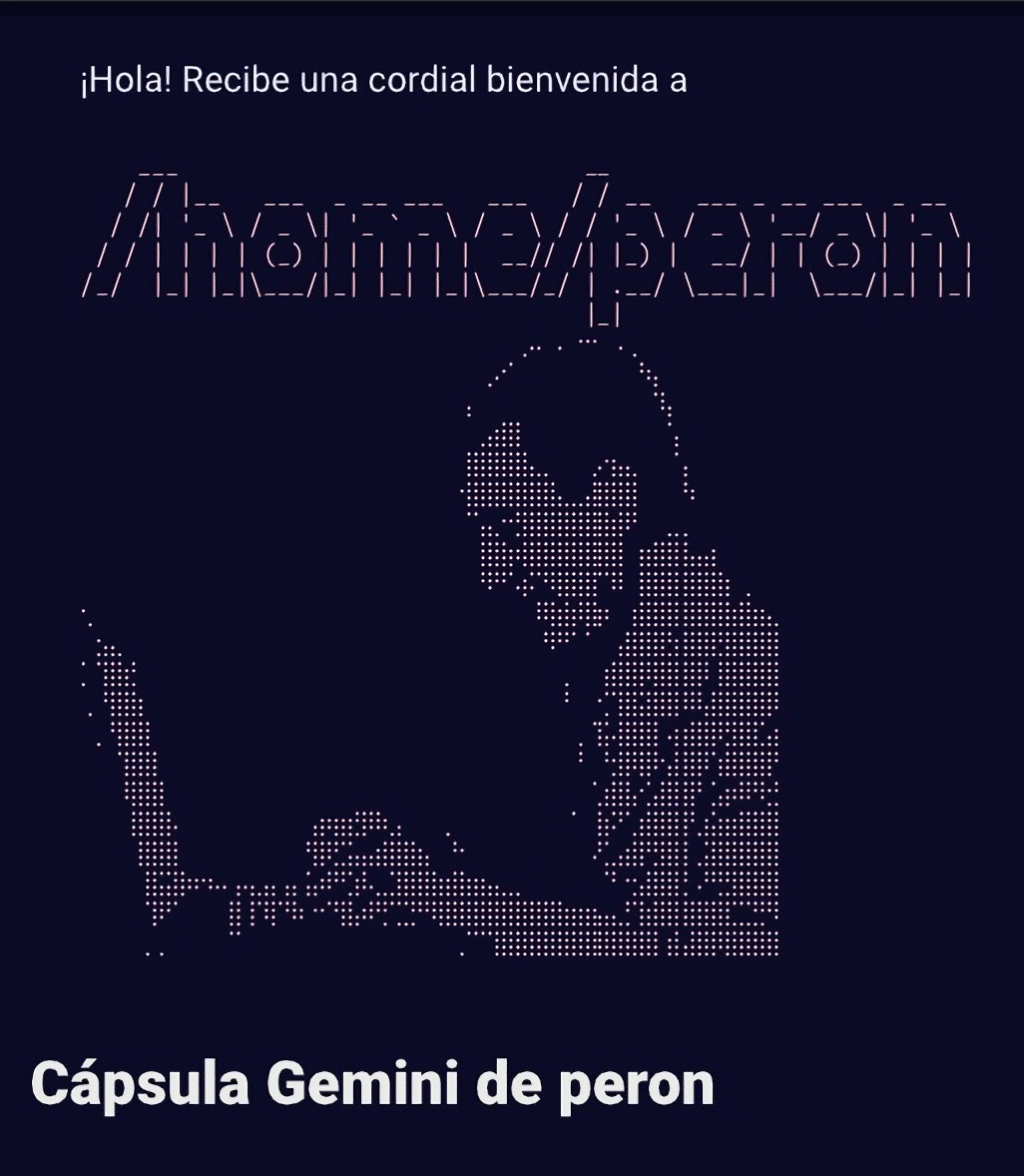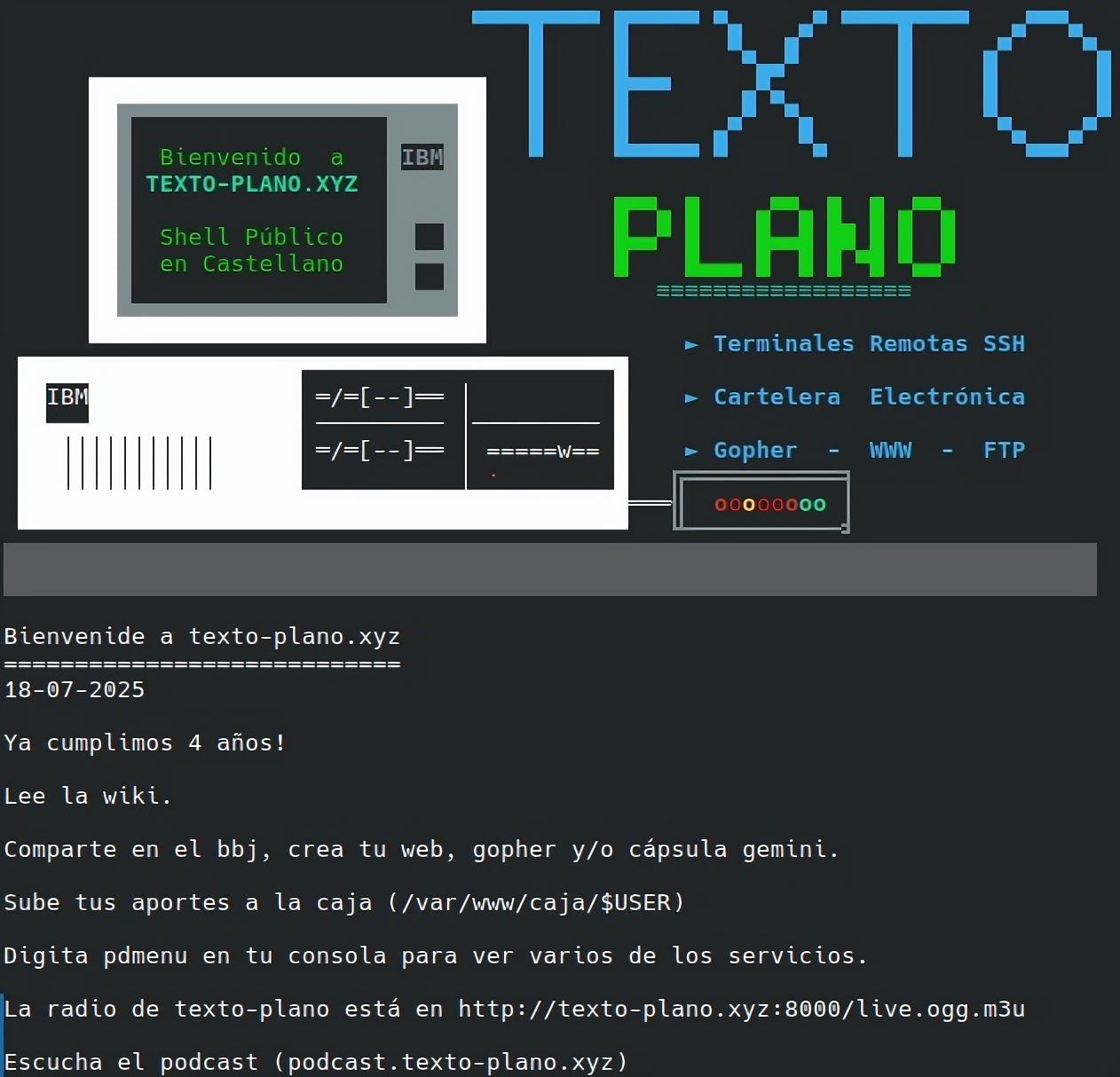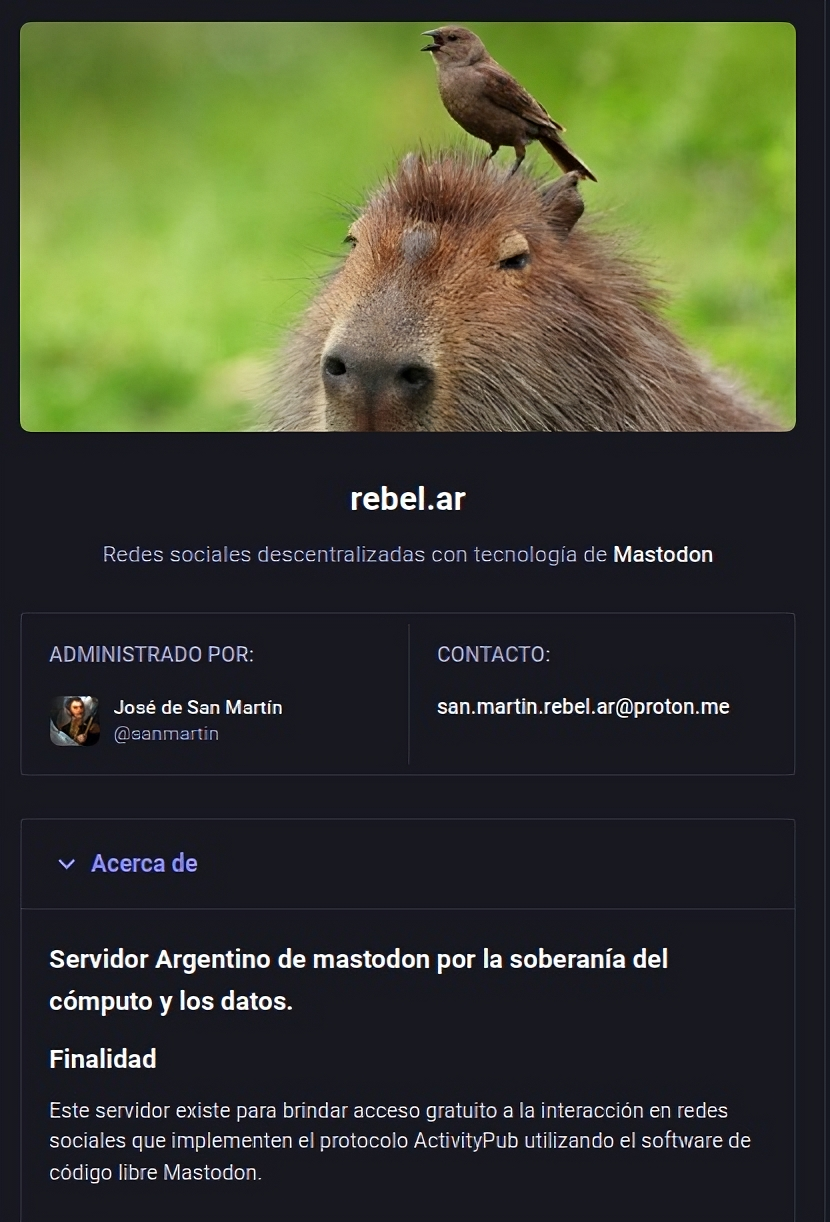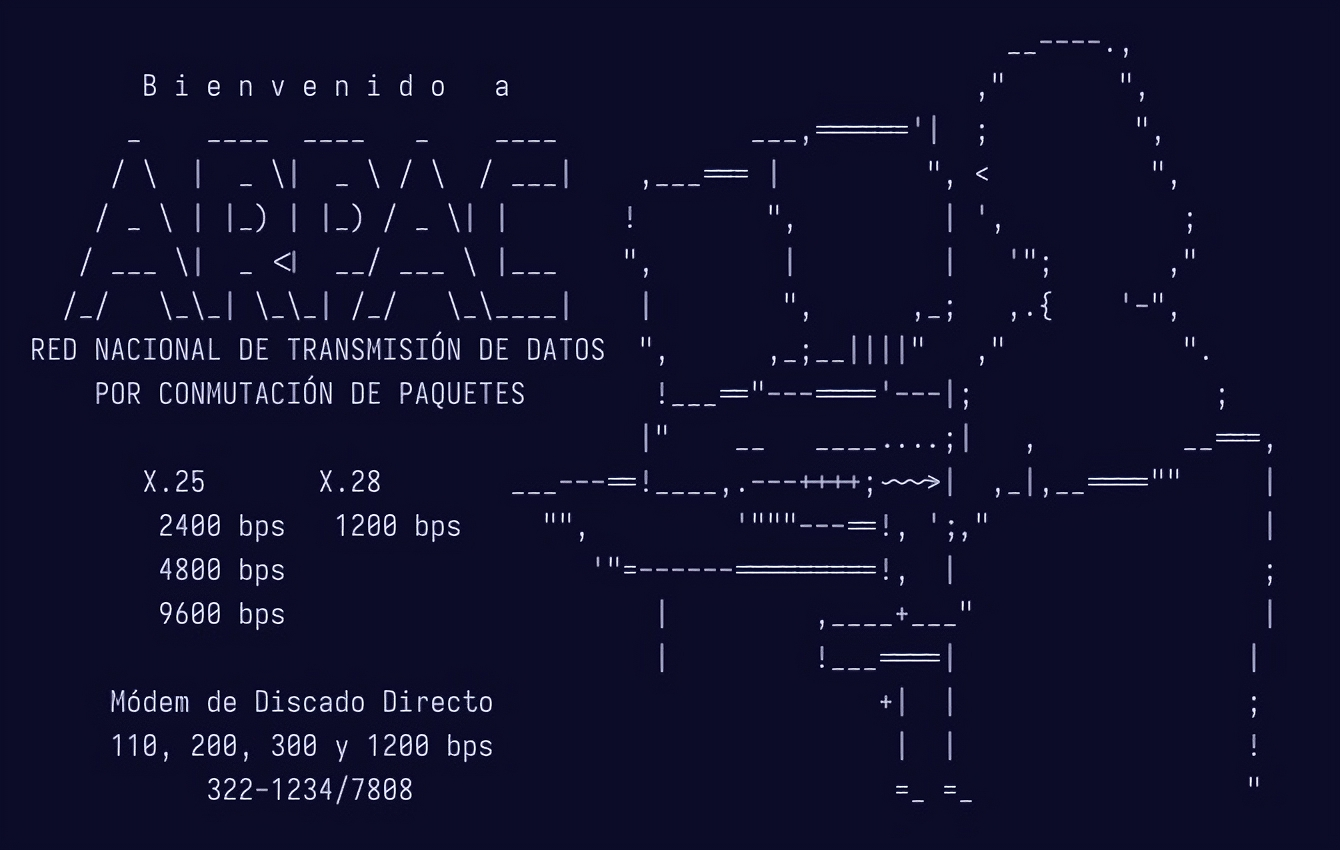In some link that I can no longer find, I had read that, around the first decade of the 2000s, each Internet user visited an average of 80 websites per month, while after 2015 that number dropped to a handful of pages. This situation — which I can’t source but I hope you’ll trust me on — has a great real basis that is expressed in the popularization and massification of the ecosystem of smartphones and mobile applications. Before that, people still experienced the Internet through personal sites of all kinds, blogs, portals, download forums, chat communities and a whopping number of digital interactions that were not completely mediated by three or four technology super corporations.
But websites are just a part of the cyberspace universe. Within the Internet there are different data communication protocols, which are basically what allow applications to communicate with each other, as long as they meet the requirements. They are developed by the Internet Engineering Task Force — a global organization that defines and promotes Internet protocols and standards. What is the advantage of using them? Anyone who can develop an app can use them for their application. So, for example, we have a dozen web browsers that use HTTP/HTTPS protocols.
Why don’t we have multiple clients for Twitter or Instagram? Because they don't use any standards. The disadvantage is enormous, because closed ecosystems impose their own ways of use, while the standards do not. For example, although they exist three or four popular browsers, there are also a dozen more designed for less powerful machines or more unstable internet connections. The same situation happens with email. Although we get used to using it via web app, since it is a protocol, we can simply download an email client to check emails.
An Alternative to Today's Internet
Today most Internet consumption occurs through platforms run by computing oligarchs. Meta, Alphabet, Amazon, Microsoft and many others take almost all web traffic, so they are the ones who decide how everything in their ecosystems should be managed: from which apps and systems are compatible with those networks to how traffic is monetized. that circulates there.
In a mostly shittified world, far from Internet standards, network access ranges from hostile to obviously prohibitive, because access through completely disposable mobile devices designed to endlessly scrolling prevails. Given that ecosystem it continues to exist the old, reliable Internet, made by people, groups and communities who prefer to lead a digital life managed by themselves and not by the dictates of the corporations.
Since the 2010s, web pages have been transforming into increasingly heavy developments: if in the previous decade the sites weighed less than 1MB, today according to the latest report The State of The Web they reach an average of 2.9MB, almost triple that. This explains –sometimes– that feeling that sites take a long time to load: not only is it your slow or unstable connection but everything is excessively heavy.
This growth in size is fundamentally due to a paradigm shift. In the data age, you have to track everything, and that is done using scripts of all kinds, mainly JavaScript, mostly used to analyze traffic in its broad sense. All the big news sites, social networks, streaming platforms, e-commerce portals and most of the URLs you visit are codenamed in this way, friendly for those who collect all that information but disastrous for the cybernaut, since in Most of the cases reside on tremendously poorly optimized sites.
But the web is a very vast field and, while it is true that most of the traffic is generated in the networks of big tech oligarchs, the counterculture has always existed, even more so on the Internet. Contrary to this way of consuming the Web, there are several ideas and manifestos about the small web o smol web (depending on your taste). The expression explains itself: a website made efficiently, friendly to the Internet user and affordable for all teams, since not only are large connections required to access some sites but also much of what is consumed is loaded onto the client, which means a greater need for computing processing.

Gemini Capsules, Gopher Holes, and UNIX Systems
When we talk about the "Small Web", popularly known as smolweb, we are not referring specifically to the WWW protocol but rather to a way of accessing Internet content through the different doors it offers us. One of the new protocols is called Gemini, similar to HTTP. Through different clients (among whom I recommend Lagrange both on cell phone and desktop), we can connect to gemini capsules, which are spaces in text mode but allow the loading of images.
All the bytes uploaded there are in their pure state, there are no scripts or trackers and there is no such thing as an ad blocker because there is nothing to block. Although it is a small community, more and more Hispanic users are creating the capsule gemi.dev. There, its creator developed an interesting "application". News Waffle it allows us to add news portals or websites and upload their content to Gemini, to enjoy a read without distractions, without spam, nothing. This without forgetting that, by loading a website in this way, the size of the transformed site is reduced by 90%.
Different from Gemini and as old as the WWW is Gopher, which instead of capsules have holes. Born in 1991, he was almost dead in the competition against HTTP, but on the Internet nothing dies completely. Being a protocol that simply provides content in ASCII format in 80 columns, it was always a fetish of terminal lovers. With the linux popularization and the appropriation of the terminal as a crucial communication tool slowly proliferated communities that emerged at the dawn of computing: public UNIX servers, known as pubnix systems.
UNIX is one of the most transcendental operating systems in history, and Linux and its distributions but also Apple systems derive from it. During the '80s, all large computers used some variant of UNIX and users used it in command terminal format. Many scientific and student communities, but also general ones, connected to computers with UNIX and different programs that allowed them to interact with each other.
Today there is a movement called "tilde-verse" which are basically computers with some UNIX (a Linux or BSD) from which you can request a user to connect via terminal and be part of a small community where there are forums, chats, files, games, Gopher holes, Gemini capsules and more, all in text mode, to interact the old-fashioned way: from one computer to another, with no intermediaries other than an ISP.
Within that public UNIX universe, plaintext.xyz is the only Spanish-language server. It has many community-generated services and content, such as its podcast and one magazine which is published in both Gopher and Gemini as well as HTTP. Of course, in pure plain text.

The Simple Web
But if you want to focus exclusively on the HTTPS protocol and not hide in those nooks and crannies, don't worry. Both Gopher and Gemini can be configured into proxies that go out to the Web. Such is the case of gopher.tildeverse.org, a proxy that collects dozens of Gopher holes to consult from our browser. But beyond that, there is also a move to bring back small, affordable sites. Since many of them escape the radar of Google and search engines, it is more about word of mouth, like in the early years of the Internet.
There are three very interesting clubs, with very clear names: 1MB Club, 512KB Club and 250KB Club. There are compiled a lot of simple sites that weigh very little, that are maintained by their creators and that, just like in the early days of the Web, invite us to browse the directory and discover what is in each of those such nice URLs. I swear you'll find a bit of everything: devs pages, random artists, old school bloggers, various link collectors...
Within the Spanish-speaking community, there is a compilation of blogs called blog!blog!, which to date has about 80 sites compiled, all in Spanish and cataloged according to theme. Just like 421.news, it also has an RSS service; That is, you can subscribe with an RSS reader to receive site updates without having to enter the browser.
As always happens with these things, entering a blog also means diving into the links that are shared: that was the power of the WWW, being able to jump from hyperlink to hyperlink. If we only stay at three or four links, are we really using the Internet? Precisely, a fun and experimental way to get lost on the web is the search engine Marginalia. There must be dozens of alternative search engines –which deserve even another post– but this one has something particular, since prioritize non-commercial content, not indexed by Google. Fundamentally, old, static and light sites that were completely buried under kilos of JavaScript. Specifically, the "Random" option in the search brings us quite particular things, sites that seem taken from another era.

The Networks are Ours
Digital communication has always been the basis of the Internet, but today it is monopolized by big technology companies, which impose their ways of inhabiting them on us. Being closed and private ecosystems, they do not work with any protocol, so we must adapt to their rules to connect. But for at least a decade different ones have been developing decentralized social networks supported by Internet standards, friendly to Internet users, low data and computing consumption, and mostly self-managed in a community way.
Mastodon, PixelFed, PeerTube and others use the ActivityPub protocol, an Internet standard since 2018 that allows intercommunication between platforms. That is, since your Mastodon account you can, for example, follow the videos of Cybercirujas that are published on PeerTube and even commented on without having a user in said instance. Something like commenting with your Facebook username on a YouTube video. These decentralized networks too they can be considered within the small Internet, and there are dozens of PC and mobile clients to use them.
A similar situation occurs with another Internet standard but thought out for instant messaging: XMPP (Extensible Messaging and Presence Protocol) it dates back to the late '90s. Formerly used by Google for its Gtalk, today is used under the hood of Facebook Messenger, Nintendo Switch chat and several more. As with email, there are hundreds of providers that provide a usuario@servidor that can be used for chat in real time, send images, video, voice notes, video calls, group chats and of course, encrypted messaging. It's just necessary create an account on some server, join rooms and download a client for PC or Android (I recommend Gajim for desktop and Monocles for mobile).

Riding the Wave
I've been surfing the web since I was about 11 years old, when at home my older brother first connected a phone cable to the external 28kbps modem plugged into a Windows 95 Pentium. Since then I was never able to stop surfing the web and get lost in lists of links, recommendations, posts on sites, posts on forums, lost chats and downloads of all kinds. Looking back and remembering that does not mean nostalgia for something that no longer exists but rather a path to rediscover.
If we take a young person under 20 years old, they probably don't know what the Internet is or associate it exclusively with the big technology ecosystem, and therein lies the problem. If the network continues to be taken over by computing oligarchs, it will be increasingly difficult to access it without going through its tolls. That is why it is crucial that we promote and disseminate real Internet spaces, governed by open protocols and standards, and operated by communities and people. The cognitive sovereignty it also falls on being able to inhabit sovereign spaces not governed by those who precisely operate against our psyche.

